|
Artist Kagami Shukai
Chatou-Ten (Tea Utensil Exhibition)
SHOWING NOV. 2 to 7, 2001
Kuroda Toen Gallery in Tokyo
Metro Plaza 1F, 1-16-14, Shibuya, Tokyo
Tel: (03) 3499-3225 Fax: (03) 3499-3235
Jump Directly to Photo Tour for This Artist
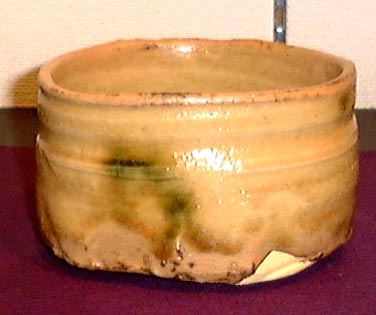 |
Of all the Mino traditions, Ki-Seto is said to be the hardest to perfect and is possibly the least well known of the four Mino styles (Shino, Oribe, Setoguro or Black Seto, and Ki-Seto or Yellow Seto). As I look through exhibition and auction catalogs of modern and contemporary Japanese pottery shown in the US, I have yet to find even one Ki-Seto item. Such is the lack of understanding of this great Mino style.
One reason is the scarcity of truly good Ki-Seto potters. It could be that most potters don't understand that "Ki-Seto owes everything to ash" as Shosaku Furukawa writes in his book on the subject. Only a handful of modern potters have captured the true flavor of Ki-Seto and amongst this group are Arakawa Toyozo and Kato Tokuro, Kato Kozo, Toyoba Seiya (married Arakawa's granddaughter), Hara Kenji and Hori Ichiro.
Yet in my opinion the finest Ki-Seto, surpassing even that of the aforementioned ceramists, belongs to Kagami Shukai (1941 - ). What makes Kagami's Ki-Seto so special is his relentless research and understanding of the ancient glazes. For close to forty years he has been in search of the roots of Ki-Seto ash glaze and believes it dates back to the Kamakura period with Ko-Seto (old Seto). Kagami speculates that the potters then used a chestnut-bark ash glaze called kurikawa-bai. Of course there are no records of this and kurikawa-bai is mentioned only around the Meiji period. He gets his kurikawa-bai from local builders who use chestnut in finer homes. No doubt it's never enough and who knows how much longer he'll be able to make his highly prized kurikawa-bai. As we now know it's everything.
Even the great Kato visited Kagami inquiring about his Ki-Seto glaze. If you look at Kato's Ki-Seto in his latter years you'll see how much they look like Kagami's. The reason being that Kagami unselfishly shared the secret recipe -- his use of kurikawa-bai. He also fires all his work in a medieval-style anagama.
There are some key terms to know when looking at Ki-Seto:
- Aburage-de (deep-fried tofu) which is a thickly applied matte yellow glaze with a crinkled or semi-rough surface.
- Ayame-de are vessels with an iris design. Other incised designs include plum blossoms, radishes, turnips, and chrysanthemums. Can have an aburage-de feel in the glazing.
- Guinomi-de, hexagonal sake cup shapes, many of the earliest Ki-Seto wares excavated by Kato Tokuro at the Kamashita kiln (the most famous Momoyama period Ki-Seto kiln) were of this small type. Very similar to aburage-de in glazing.
- Kiku-zara-de, wares originally fired at the Ohira kilns in Gifu during the early-mid Edo period, usually with a foliated rim (rinka) and bold splashes of copper green.
- Tanpan, the green copper splashes on Ki-Seto. They should appear natural and not just plastic looking roundels.
- Koge, brown scorch marks.
Kagami does all of the above and does them so well. He also uses carved lines on many of his pots to highlight the glaze, form, and tanpan. It was the much-prized koge that took him the longest to get; he told me it remained elusive for about twenty years.
Walking into the recent exhibit space I felt like I was entering some sort of Ki-Seto dream. The room was radiant. Chawan lined up like royalty, sake utensils gathered in a large grouping (all sold out), and a few Shino pieces placed here and there as well (Kagami does fire some superb Shino).
Without further ado, I invite you to enjoy these photos and mentally and spiritually take in the beauty of Kagami Shukai's Ki-Seto; there's nothing else like it in the world.
Click thumbnail to see larger photo
|
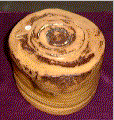
|
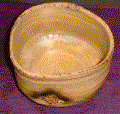
|

|
|

|

|
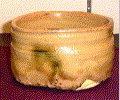
|
|

|

|
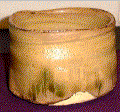
|
|
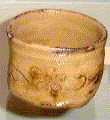
|
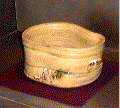
|
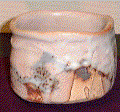
|
|

|
Story and Photos by
Robert Yellin
|
|
For more on this artist:
Sake Vessels - A Wonderful Trio
|